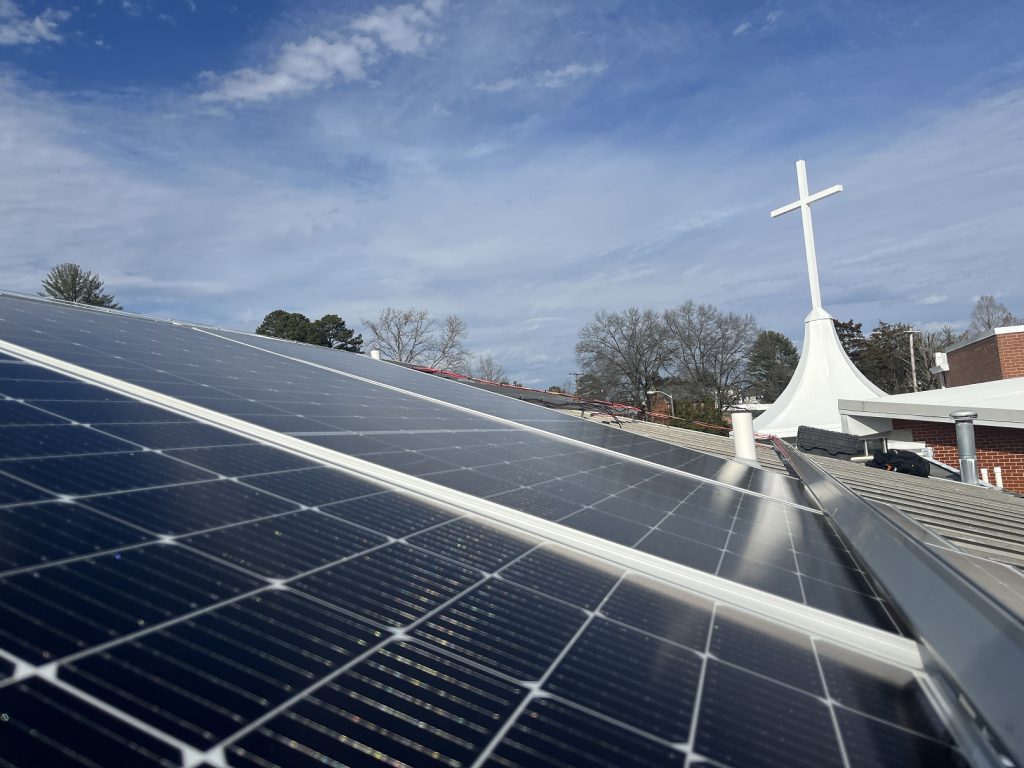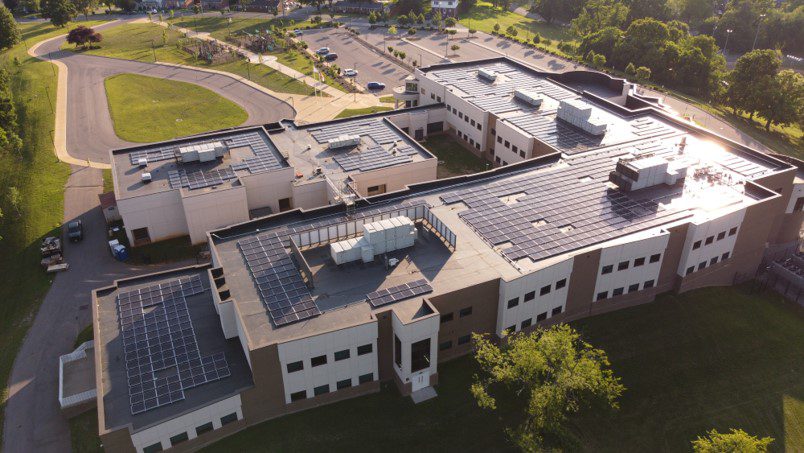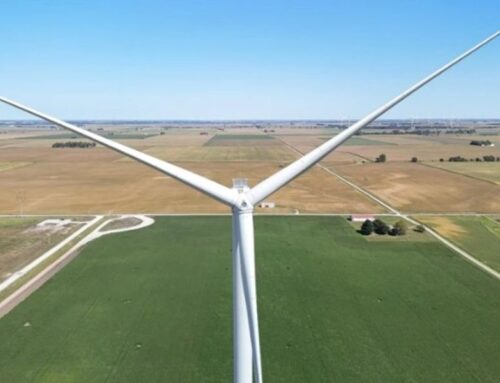Clean energy tax credits: Why are they important for Appalachia?
April 18, 2025

Imagine getting a major discount on a new energy-efficient water heater or rooftop solar panels — simply for making a choice that saves electricity or uses clean energy.
That’s exactly what major federal legislation in 2022 enabled. This law created and extended tax credits to help homeowners, businesses, renters, nonprofits and local governments lower energy costs while bolstering local economies, including Appalachian communities left behind by the coal industry.
But these tax incentives are at risk. Some members of Congress are identifying programs to cut to pay for their intended tax cuts to billionaires, and alarmingly, these clean energy tax credits are on the chopping block.
There has been some bipartisan pushback — 21 members of the House of Representatives sent a letter to Congressional leadership asking to protect the tax credits, warning about the potential for “drastically higher power bills for American families” in the coming years. But recent reports indicate many members of Congress still intend to target these tax credits. The future of these tax credits is uncertain, but removing them would likely result in the elimination of thousands of jobs and higher household energy costs.
Whether you’re new to the topic or have directly benefited from these credits already, here is some information on what they are, who uses them, why they’re important for Appalachia and what can be done to help save them.
On the surface, federal tax credits may seem overly complicated or unrelatable. However, understanding the intricacies of tax law isn’t necessary to witness the positive impact these incentives are making in the country.
Clean energy tax credits reduce costs for people, businesses and organizations that invest in energy-efficient upgrades and renewable projects. The concept is not new — some of the first federal tax credits for clean energy came about in the late 1970s and have been re-enacted and tweaked over the ensuing decades. The recent legislation, the 2022 Inflation Reduction Act, just modified and increased the value of certain credits to facilitate further investment in reducing carbon emissions and driving a clean energy transition, and to give extra incentives to clean energy developers that invest in low-income communities and places affected by coal, oil and gas.
A recent Appalachian Voices report defines many of these concepts and dives deep into how they benefit the region and highlights examples of successful projects. Some of these incentives include:
These tax credits increased and expanded the existing renewable energy production tax credits and investment tax credits for businesses and organizations. Project developers can choose to use either the investment or production credits. ITCs serve as a dollar-for-dollar rebate toward the “investment” in a new clean energy system, like a solar installation. At the same time, PTCs are calculated based on the amount of energy a system produces. The IRA made projects under 1 megawatt eligible for a baseline ITC of 30% of the cost of the system through 2033. For PTCs, the baseline for projects of the same size began at 2.1 cents per kilowatt-hour in 2023. This credit will increase every two years through 2033.
Many people might be more familiar with homeowner tax credits, which have been around since the early 2000s. The IRA gave credits a more significant financial impact and made them available through 2032. The residential clean energy credit increased to 30% from 26%. The energy-efficient home improvement credit also increased to $3,200 a year for spending on various technologies, such as insulation, air conditioners, furnaces and heat pumps.
Certain qualifying projects are eligible for additional tax credit amounts, some of which include:
- Low-income communities: Designed to invest in energy projects that will reduce energy costs for low-income people and in Tribal communities, including as part of affordable housing projects.
- Energy communities: Designed to support new energy technology jobs in areas that have been negatively impacted by the decline of the fossil fuel industry, such as the coalfields of Appalachia and communities near power plants.
- Domestic content: Designed to encourage the use of U.S. products when building zero-emissions energy technology.
Tax-exempt entities and government entities do not have a federal tax burden, which historically made them ineligible to take advantage of tax credits. The IRA allowed these entities to claim tax credits as a direct payment, making new energy investments more affordable for churches, fire stations, recovery centers and many other nonprofit and local government institutions.

Let’s simplify this with a hypothetical example: A public school system in West Virginia hopes to lower its monthly energy bill by installing solar panels.
As a tax-exempt organization, the school is now eligible for the 30% ITC baseline and can claim these credits as direct cash payments. Additionally, the school district is located in a former coal mining community and qualifies for an additional 10% energy community bonus credit. Through the IRA, the school now has a financially feasible option to lower its monthly energy usage and monthly bills, reduce carbon emissions and serve as an example in the community. It’s a win-win-win!
These tax credits don’t just help people and organizations save money on utility bills. They also bring more high-quality jobs. In 2023, clean energy jobs grew at more than twice the rate of the overall economy, according to a Department of Energy report. In 2020, nearly half of all new energy jobs were in clean energy, accounting for 42% of all energy jobs.
Many of these positions are in the solar industry, representing close to 280,000 jobs and more than 10,000 solar businesses nationwide in 2023, according to the Solar Energy Industries Association. The credits help reduce the financial barriers for solar installations, allowing many solar developers to continue or grow their businesses, creating jobs and putting dollars back in communities that benefit the most. For instance, federal incentives have allowed Solar Holler, a West Virginia-based solar company, to serve an increasing demand for solar throughout its service region and grow to 94 full-time employees.
Additionally, energy costs are a significant problem in Appalachia. Extreme winter cold and summer heat, combined with older housing stock and, all too often, low-paying jobs, cause many people to spend a disproportionately high share of their income on utility bills every month. According to a study conducted by NERA Economic Consulting, repealing tax credits would make the situation worse and result in higher electricity prices across the board — with residential customers facing bills 7.3% higher by 2029 alone.
The IRA enables homeowners to cut costs on energy-efficient improvements, such as installing new windows or a water heater, as well as renewable energy upgrades, like installing rooftop solar. With these changes, homeowners have even more opportunities to significantly reduce their energy bills.
It’s simple: Energy tax credits are having positive impacts in Appalachia — boosting local economies, creating new jobs, enhancing energy reliability, lowering household electricity bills and curbing pollution.
From the church down the street to neighbors next door, plenty of people and organizations in Appalachia have benefited and continue to benefit from clean energy tax credits. Keeping these credits intact will enable continued economic growth and environmental protection in regions left behind for far too long.
It’s not too late to voice your support for these investments that have real, lasting impacts on your community. Consider writing to your members of Congress or giving them a call or shoutout on social media. Let them know that clean energy tax credits work in Appalachia!
Search
RECENT PRESS RELEASES
Related Post





